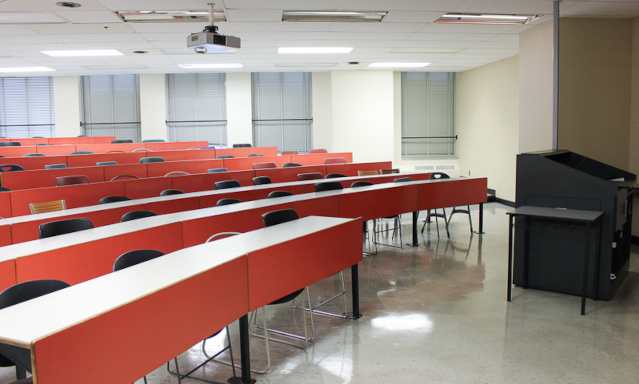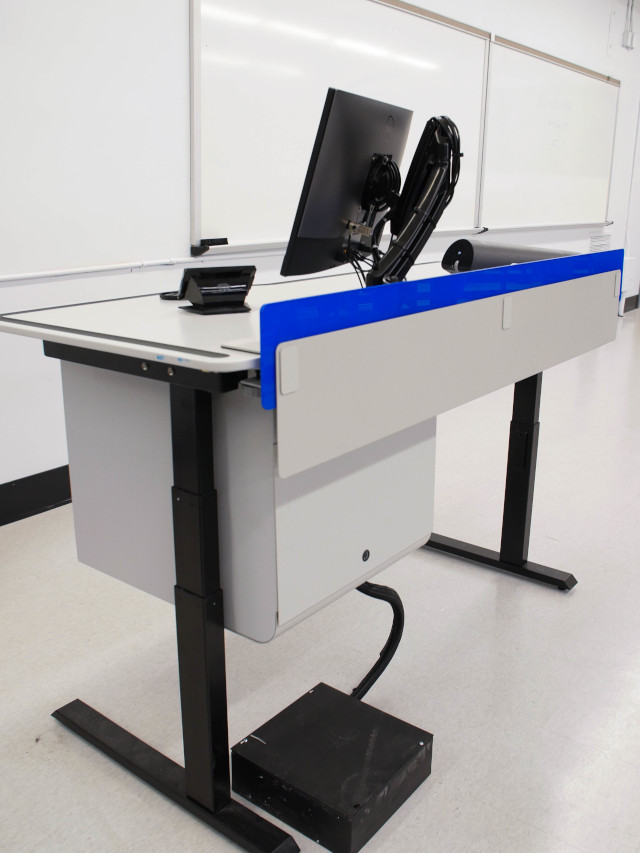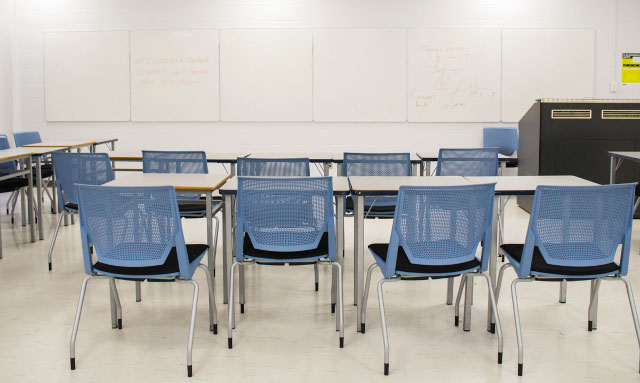Classroom Audit
In order to move forward with the creation of classroom standards, the Teaching and Learning Spaces Working Group commissioned an audit of all general use classrooms on the Toronto Metropolitan University campus. The resulting report represents data collected during Winter 2020 reading week. Data from a total of 165 general classrooms, comprised of auditorium-style rooms, lecture halls, tiered classrooms, and flat classrooms, were collected across campus while classes were not in session. The audit was conducted by a team of eight undergraduate students and one graduate student project manager using tablets, laser measures, and light metres.
Audit Findings, 2020
Recommendations
Based on the results of the audit, the audit team made the following recommendations:
- Lighting: The lighting conditions in many of the learning spaces across campus are below minimum standard recommendations. This has been shown to have a negative impact on not only student learning but also student wellbeing.
- Furniture: Broken teaching equipment and furniture should be removed from classrooms. Several classrooms had broken chairs and desks piled into corners or single chairs and/or desks with obvious deficiencies. This extra furniture contributes to cluttered learning environments, negatively affecting concentration, and pose a potential hazards to instructor and student safety.
- Classroom Capacity: There were several rooms in which the actual classroom capacity as determined by the audit was less than the capacity listed in the Registrar’s records. These discrepancies should be investigated. It is reasonable to expect that chairs will move between classrooms, however, if there is a difference of 10 or more seats, this should be cause for concern.
- Accessibility: Critical to the Toronto Metropolitan University experience is creating accessible, inclusive, and engaging learning environments for a diverse population. Based on the findings from this audit and the current state of our campus, there are substantial physical barriers to the four core principles of the AODA: dignity, independence, integration, and equal opportunity.
- Entry into several classrooms have multiple barriers: inaccessible door handles, inaccessible door windows, and absent or broken automatic door openers.
- Once inside the classroom, we found lack of accessible seating and desk spaces for people with varying heights, sizes, and needs, outdated teaching podiums, and issues with stairs (e.g., damaged stair nosing or stair nosing that lacks contrasting colours) in many classrooms.
Response

VIC-501 was selected, along with six other classrooms, for immediate refurbishment based on audit findings.
Additional classrooms have been refreshed as part of an ongoing response to the audit findings.

Accessible podiums were installed in seven classrooms as part of the Summer 2020 refresh process.
Accessible podiums continue to be installed in classrooms as part of the Classroom Refresh Project.

Furniture choices for classrooms are currently under review by the Teaching and Learning Space Working Group.
Furniture has been replaced throughout campus as part of the Furniture Audit Program, and continues to be updated and replaced.
Audit Team
Audit prepared by: Michelle Schwartz, Project Lead and Alexandra Marquis, Project Manager, Centre for Excellence in Learning and Teaching, Toronto Metropolitan University
Audit Team: Isabella Alcantara, Julia Krulicki, Odel Linetska, Valentina Garzon, Alick Lazare, Ariel Weiss, Soma Khan, Sara Lee